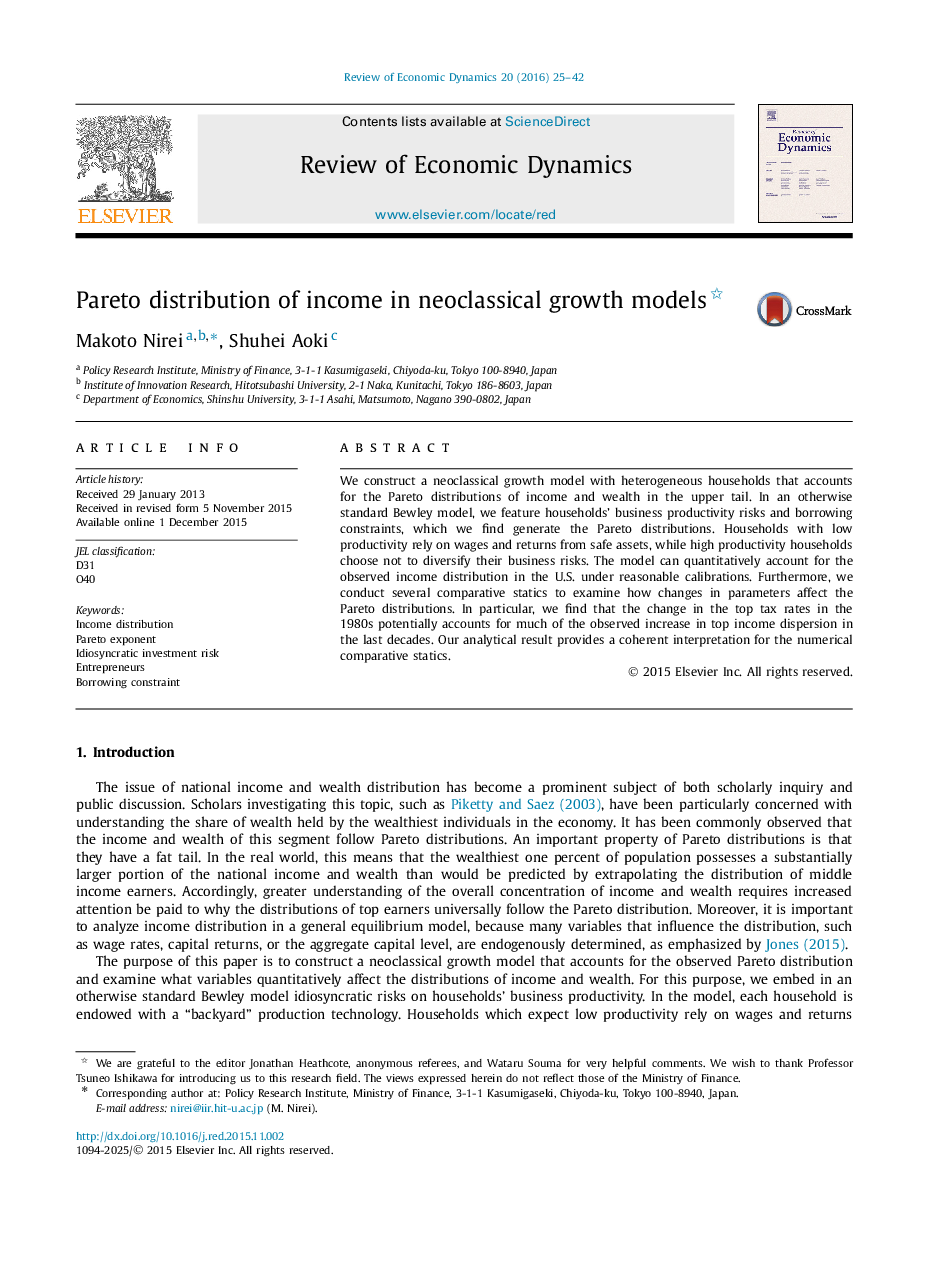| کد مقاله | کد نشریه | سال انتشار | مقاله انگلیسی | نسخه تمام متن |
|---|---|---|---|---|
| 986300 | 1480804 | 2016 | 18 صفحه PDF | دانلود رایگان |
• A dynamic general equilibrium model accounts for upper-tail distributions of income.
• The Pareto distribution of income is analytically derived in the model.
• Business productivity risks determine the inequality level in the tail.
• Borrowing constraints or labor risks affect the tail through precautionary savings.
• A higher marginal tax rate for the top income bracket reduces the tail inequality.
We construct a neoclassical growth model with heterogeneous households that accounts for the Pareto distributions of income and wealth in the upper tail. In an otherwise standard Bewley model, we feature households' business productivity risks and borrowing constraints, which we find generate the Pareto distributions. Households with low productivity rely on wages and returns from safe assets, while high productivity households choose not to diversify their business risks. The model can quantitatively account for the observed income distribution in the U.S. under reasonable calibrations. Furthermore, we conduct several comparative statics to examine how changes in parameters affect the Pareto distributions. In particular, we find that the change in the top tax rates in the 1980s potentially accounts for much of the observed increase in top income dispersion in the last decades. Our analytical result provides a coherent interpretation for the numerical comparative statics.
Journal: Review of Economic Dynamics - Volume 20, April 2016, Pages 25–42
